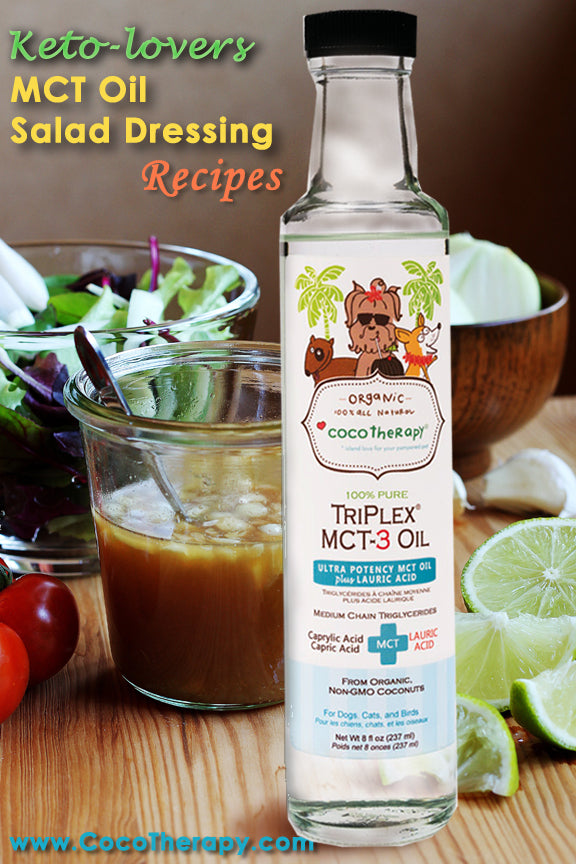This post originally appeared on the CocoTherapy blog in May 2017. We've updated it with new information to help you better protect your pets!
The weather's getting warmer, and many of us are spending lots of quality time outside with our pets. But with the higher temperatures and increased humidity, the likelihood of your pet being exposed to fleas and ticks increases.
At this time of year, conditions are ideal for these nasty pests to survive and multiply. Bites from fleas and ticks are uncomfortable and irritating and can also put your pet at risk of serious health problems.
Fleas can cause illnesses such as flea allergy dermatitis (FAD), cat scratch disease, and anemia. Ticks can also spread dangerous tick-borne diseases like Lyme disease, Rocky Mountain spotted fever, Anaplasmosis, Ehrlichiosis, and Babesiosis – all which can be fatal.
Fleas and ticks are a menace to both pets and people, so it's important to protect your home and loved ones from these stubborn and dangerous pests. But when is flea and tick season? What’s the best way to protect your family, home, and pets? And how does coconut oil kill fleas and ticks?

When Is Flea and Tick Season Throughout the US?
The US is a huge geographic area with a multitude of climate zones. For this reason, flea and tick season can vary depending on where you live. Residents of some states like Florida and Texas should be on guard against fleas and ticks year-round. But those who live in states like Michigan and Iowa will enjoy shorter flea and tick seasons.
It's important to educate yourself about flea and tick season in your region so you can best protect your family, your home, and your pets. For more information, check out this handy flea and tick season map from the American Kennel Club.
How to Protect Your Home from Fleas and Ticks
Your home is your castle, and the good news is there are steps you can take to protect it from fleas and ticks.
In the Garden
Be sure to keep grass mowed and shrubs trimmed back. Eliminate other obvious hiding places such as piles of wood or patches of tall weeds. Sprinkle food-grade, organic Diatomaceous Earth in areas your pet frequents. Diatomaceous earth is a non-toxic powder made up of fossilized organisms that break apart flea eggs and kill adult fleas.
Around the House
Keeping things tidy around the house can go a long way in the fight against pests. Make sure to keep carpets and furnishings clean and vacuumed, and regularly wash bed linens and pet beds.
Checking for Fleas and Ticks
It's also important to check for fleas and ticks regularly – especially when returning from walks outside. Use a flea comb, and If you find fleas, comb and immediately bathe your pet thoroughly. If you discover a tick on your pet, be very careful removing it. A specially designed tick-removal tool is the best option to prevent infection in you or your pet.
The Dangers of Chemical Flea and Tick Preventatives
There are lots of flea and tick treatments on the market today, but many are ineffective, or pose serious health risks to your pet.
Responsible pet owners should be particularly wary of using chemical preventatives, either year-round or seasonally.
Many vets recommend chemical preventatives as a solution to the pest problem, but chemical oral flea and tick preventatives and spot-on products can cause a range of health problems including skin irritation, vomiting, and even seizures.
The safest way to protect your pet against fleas and ticks is with an all-natural preventative. That's right – fight nature with nature! How? With coconut oil for fleas and ticks...
Therapeutic Coconut Oil – a Safe and Natural Solution
Will coconut oil kill fleas and ticks on dogs and cats? You bet! 100% natural, human-grade coconut oil acts as an effective flea and tick repellent. It's a safe and natural alternative to powerful chemicals that risk the health of your precious pets.
Chemical pest preventatives work by entering your pet's bloodstream, killing fleas and ticks on ingestion of your pet's blood. Therapeutic coconut oil is different. It repels and kills fleas and ticks on contact – eliminating harmful side effects.
Since therapeutic coconut oil is non-toxic, free of chemicals, and soothing to your pet's skin, it's the perfect solution to the pest problem. It has been the traditional remedy for fleas, mites, (and even lice) in the Philippines for centuries.
So, how does coconut oil kill fleas and ticks? When applied to the skin and coat, coconut oil coats the exoskeleton of any existing parasites, suffocating them and limiting their mobility. In addition, because of coconut oil’s antimicrobial and anti-inflammatory properties, it prevents bites from becoming infected and helps heal inflamed skin.
If you suspect that your pet has fleas, massage a generous amount of coconut oil onto the skin and hair of the animal, making sure to coat the skin well. Leave the oil on for at least 8 hours, then wash your pet with a natural, gentle shampoo.
When treating your pets, be sure to choose a therapeutic-grade coconut oil for fleas and ticks such as CocoTherapy Virgin Coconut Oil. Our oil is sourced from our USDA-certified organic family farm in the Philippines and made in our own facility. It’s high in lauric acid, and effective against stubborn pests.

DIY Natural Flea & Tick Repellant for Dogs
You can also make an effective and safe pest repellent with coconut oil. Making your own natural coconut oil flea & tick repellant is a great way to control the ingredients you put on your dog while avoiding any unwanted ingredients that may be harmful to them.
Natural Flea & Tick Repellent Balm:
Balm is a great consistency to for rubbing inside the ears, areas around the face or muzzle, armpits, in-between paw pads and toes. Balms coat the fur strands well, which is a great deterrent for crawling pests. Balms also provide added protection to foot pads from scrapes and cuts.

Mix all ingredients in a 6 oz mason glass jar.
To use as a pest repellent, cover your hands with a small amount of the coconut oil balm mixture, then massage into your pet's coat. Take care to work the oil down so it makes contact with the skin.
Make sure to apply the balm liberally on the foot pads, between the toes, around and inside the ears, face & muzzle area, armpits, and belly. As a side benefit, your pet will have a shiny, moisturized skin and coat, as coconut oil helps with itchy, scaly skin and dry fur!
Natural Flea & Tick Repellent Spray:
You can also make an all-natural flea & tick repellant spray with our liquid TriPlex MCT-3 Oil. Sprays are quick and easy to apply and allow for quick re-application when needed while outdoors.

In a 14 oz spray glass bottle, mix all ingredients well. Shake gently to mix mixture before each use. Before going outdoors, lightly spray dog’s entire coat until damp, but not dripping. Brush thoroughly. Repeat if necessary. Take extra care to spray toes and paw pads, armpits, belly, behind ears, and hard-to-reach places. Do not spray on the face. You can make a small jar of coconut oil flea & tick repellant balm (recipe above) for the face and muzzle areas.
A Note to Cat Parents….
Please note that some essential oils can be potentially toxic to cats. Check with your holistic vet when using essential oils on or around cats.
In the case of cats with fleas or ticks, plain therapeutic virgin coconut oil high in lauric acid is sufficient to eliminate and prevent fleas, ticks, and mites.
We hope you enjoyed today's post about coconut oil for fleas and ticks. Have you used CocoTherapy coconut oil for fleas and ticks as a natural pest repellent to protect your beloved pets? Let us know in the comments!
For more information about CocoTherapy and our coconut oil, chips, and treats for pets, check out more of our blogs.



